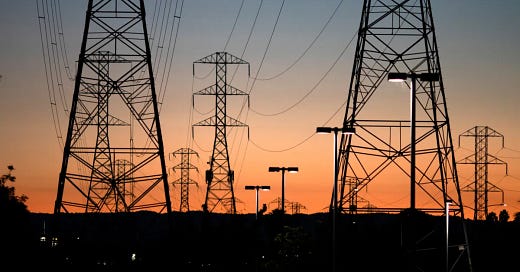The growing divergence in electricity prices across U.S. states, highlighting a significant rise in electricity costs in states with progressive energy policies. Since 2004, states with stricter renewable energy mandates, carbon emissions goals, and cap-and-trade programs have seen rates increase dramatically, in part due to limitations on fossil fuel infrastructure. For example, renewable-heavy states like California face high costs due to substantial subsidies for solar power, which suppress electricity prices during daylight but financially strain baseload power sources, such as natural gas and coal, required for evening and peak demand.
The report contrasts states with low-cost electricity, like Florida, which relies on natural gas despite lacking its own reserves. Florida’s approach bypasses the renewable mandates that are characteristic of blue states. Additionally, areas governed by Regional Transmission Organizations (RTOs), such as PJM and MISO, face specific challenges from federal policies that encourage renewables but fail to support sufficient backup power generation. Subsidies for renewables under the Inflation Reduction Act have disincentivized new investments in natural gas and nuclear power within RTO regions, contributing to projected power shortages, especially during peak periods. Notably, grid operators in these regions warn of a potential 30% shortfall in electricity supply by 2032 if current policies persist.
The report concludes that these progressive policies, while aimed at reducing emissions, may be ineffective in curbing climate change significantly, given that even extreme cuts in U.S. emissions would only minimally affect global temperatures. Instead, these policies are leading to energy reliability issues, economic strain, and higher costs, urging a need for a more balanced energy strategy that prioritizes affordability and grid stability.















Share this post